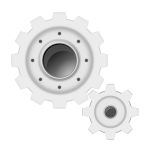 Computers require some assembly when they are moved or first un-packaged.
Computers require some assembly when they are moved or first un-packaged.
Despite the fact the back of a computer usually ends up looking like a tangled mess of cables, the setup is rather simple.
It’s all a case of plugging the right cables into the right sockets (or ports), which is made easy by the fact that for most cables, there is only one similar port available.
The computer itself uses a single cable. This power cable is usually detachable, so one end will plug into the back of the computer, near the top, in the only socket that is the right shape and size. The other end will plug into your power source (wall socket, power strip, voltage regulator, etc.).
The monitor comes with two cables. One, usually detachable, will look identical to your computer power cable; it gets plugged into the monitor on one end, and into your power source on the other.
The second monitor cable will have identical ends, each with a bunch of little pins and a screw on each side. One end will plug into the monitor (you can tighten the screws to prevent it from wiggling free) and the other end will plug into the back of your computer.
With these three cables plugged in, your computer and monitor both have power, and are connected so that they can recognize one another. The input devices are next.
Your standard mouse and keyboard will each come with a cable attached. Those cable ends will either be PS/2 (round, with several pins) or USB (flat). On the back of your computer, the PS/2 ports will each be labeled with a keyboard or mouse symbol (also, they are color-coded, purple for keyboards and green for mice), and USB plugs can be plugged into any USB port.
These make up the essential elements of computer assembly. Power on and you’re up and running!
